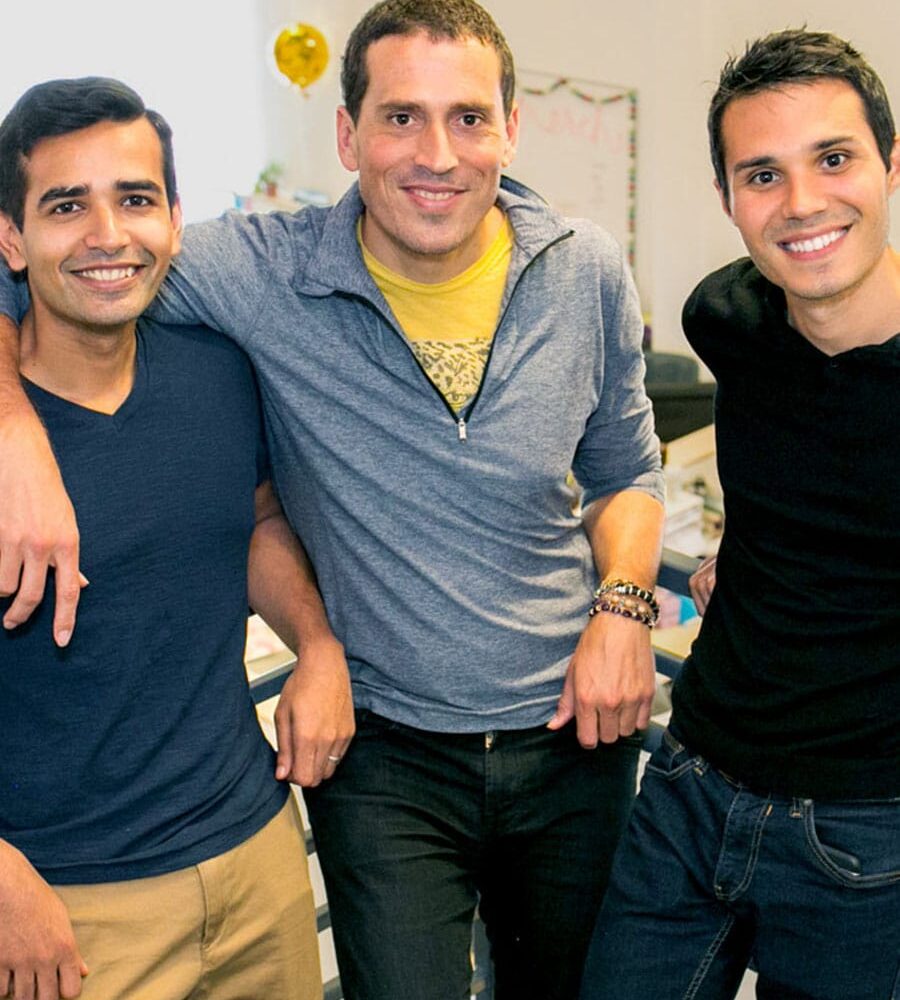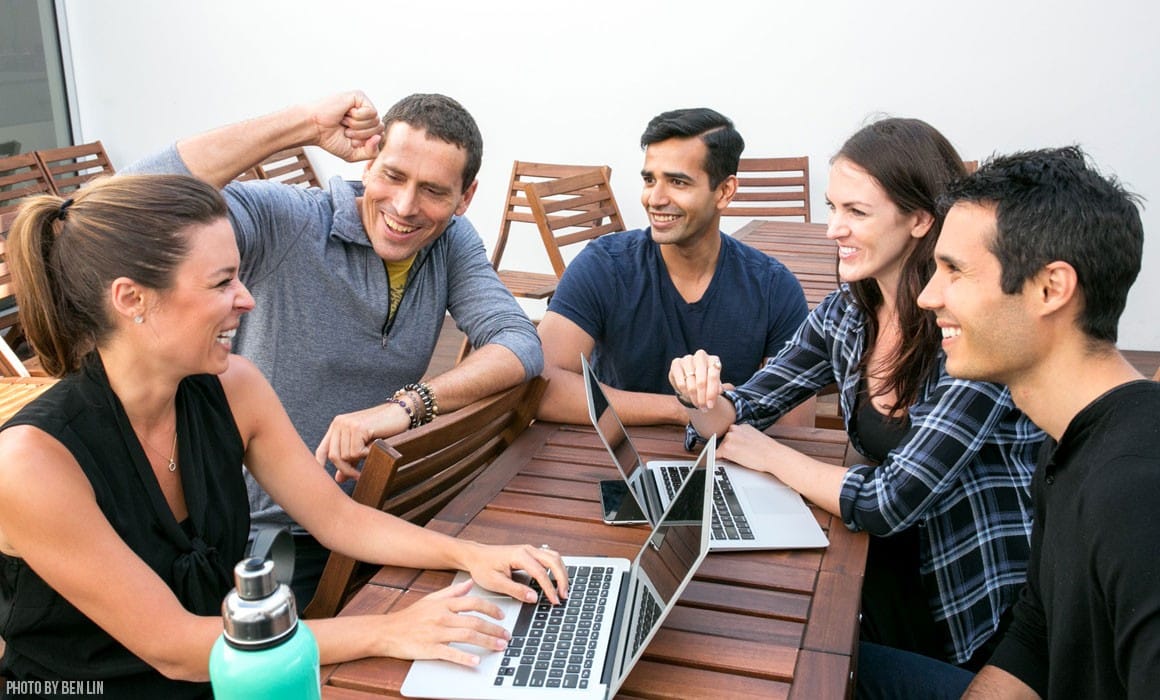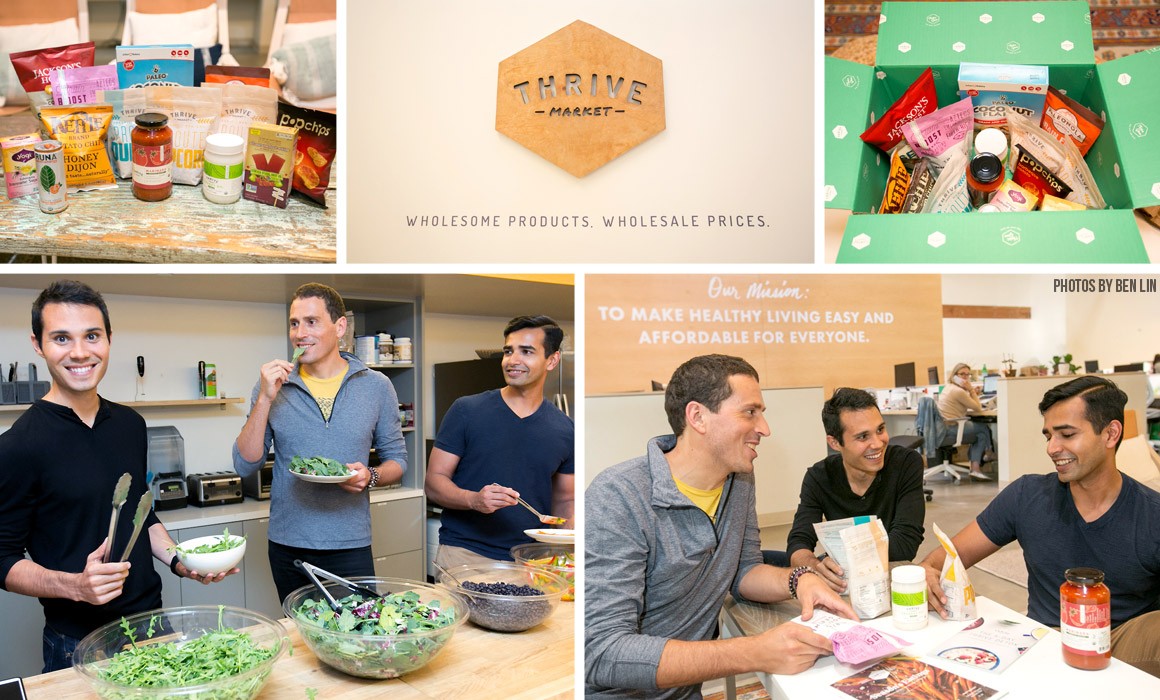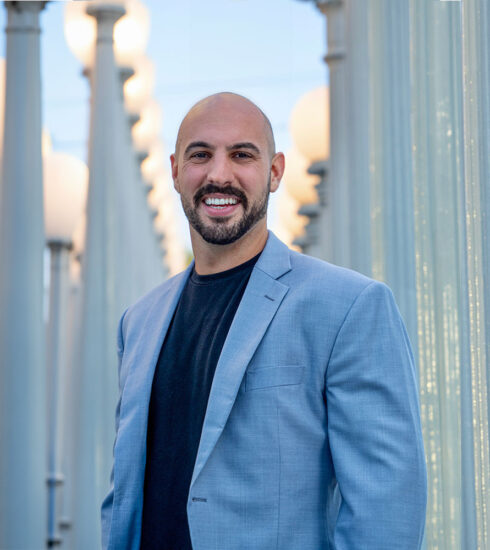Thrive Market Grows Organic Industry with Home Delivery
From 2014 to 2015, the American organic goods industry grew 10.8 percent, amassing $43 billion in spending and setting a new precedence for a previously underestimated market. But as with most things in life, every great business opportunity is about timing, and for Thrive Market, the largest retailer of exclusively non-GMO packaged products, timing couldn’t be better.
Within a year of launching, the eCommerce platform known for selling organic packaged goods for 25-50 percent below market rates, generated over $100 million in revenue. Now, every venture capitalist in Silicon Valley that initially turned down the company, is cringing at their misguided decision and clamoring to get a piece of the burgeoning behemoth.
MiLLENNiAL caught up with founders Gunnar Lovelace, Nick Green, and Sasha Siddhartha at the Thrive Market headquarters located in Los Angeles’ very own Silicon Beach. Upon walking into the 60,000 sq. ft. corporate warehouse, you’d never know the company was fairly new. Over 150 employees dominated the two-story office space, with an additional 100 employees in member services and almost 250 employees in the fulfillment centers between California and Indiana.
It’s fair to say these guys aren’t your average tech unicorns. No. They are instead closer to the infamous Game of Thrones dragons. And they are setting the industry on fire.
Planting the Seed for a Healthy Future
Gunnar Lovelace, 39, knew there had to be a healthy and affordable solution to the inside aisles of grocery stores. As a serial software entrepreneur who had always wanted to start a social enterprise, he thought if he could offer the same organic packaged goods Whole Foods sold at a discounted rate, he could effectively enhance conscious consumption across the nation.
It was this purpose-driven endeavor that attracted Nick Green, 31, another serial and social entrepreneur, to join the team as a cofounder. “[Gunnar] got midway through the pitch and I said I’m ready to invest but I have one condition, you’ve got to take me with you,” Nick tells us. He admits to being the first person smitten by “the confluence of mission, massive opportunity, and really exciting and passionate vision.” Being a technology company first, Nick and Gunnar quickly realized they needed to bring a technical cofounder into the mix.
They met Sasha Siddhartha, 33, a former Microsoft developer who started and successfully exited his own eCommerce fashion brand. After a five-hour meeting, Sasha agreed to come on as a cofounder and CTO, and built out the platform over the next 8 weeks the likes of which Nick and Gunnar were unable to do in the six months prior. “As a fundamental it was important for me to build confidence around the business,” Sasha states.
“We were rejected by over 50 VCs and angel investors.”
The next battle the three cofounders faced was raising capital. Like most startups, it wasn’t easy convincing traditional lenders that an organic shopping platform was going to be the next big thing. As Nick explains, “We were rejected by over 50 VCs and angel investors.” Gunnar adds, “[VCs] didn’t realize how big of a market this was…they just didn’t understand the demand for the product.”
Simultaneously, the founders had been talking to a variety of health and wellness bloggers to act as potential collaborators in creating content and promoting Thrive to their networks. Call it luck or just being in the right place at the right time, but these influencers took it upon themselves to suggest investing in the company. “Unlike the VCs, these health and wellness influencers’ careers and personal missions were affectively our mission. They got the vision immediately,” Nick explains.
Thrive Market then turned to 100 influencers to raise over $9.5 million before approaching VCs for any additional funding.
Taking Root and Growing the Thrive Market Empire
It was Cyber Monday 2014. Thrive Market had only been live for about a month when they would soon realize the power of influencer marketing. One of their prime investors – Wellness Mama, a mother of six from rural Kentucky who receives over six million unique visits to her blog per month – posted about Thrive and traffic to the site skyrocketed. “We did more orders in that one day than we had in the previous 2-3 weeks,” Nick says. This was the moment the team had been waiting for, yet in all its glory, they were overwhelmed by the product turnover.
Sasha explains, “When we hit real scale in December of 2014 we were turning around our entire inventory of 50,000 units every 3 days.” One of the decisions they made early on was to maintain all their own shipping, storage and inventory in-house, and in December of 2014 – less than 2 months into opening – they had reached their storage capacity. “We couldn’t move our products fast enough to keep up with demand,” Sasha adds. That’s when the guys knew they needed to hire a team of world-class experts to scale the business quickly.
They soon moved into a 35,000 sq. ft. warehouse in Commerce, Calif. that was 10 times bigger than their last storage facility, a space they anticipated comfortably lasting them for the next year. But seven months later, demand across the country spread like wildfire and Thrive had to open up a 350,000 sq. ft. warehouse in Batesville, Indiana just to keep up with their east coast consumer base.
The exponential growth seen across the country suggested one thing – people are now demanding access to healthy food choices. Millennial parents want to pack their kids’ lunch with natural, nutritious products and not feel guilty about providing that midday snack. “We are selling a Kind bar at the same price as a Snickers bar,” Gunnar adds.
“When we help people access healthy food for less we are empowering them.”
He continues, “When we help people access healthy food for less we are empowering them,” suggesting Thrive Market is aiming to alleviate major macroeconomic and environmental issues by delivering quality and competitive alternatives to the conventional equivalent. Gunnar ensures that they maintain a highly curated catalogue, with “all food products being non-GMO.” The site also sells non-toxic beauty and skin care products.
While all-natural healthy alternative products may be a favorite among health enthusiasts, a large component of Thrive’s mission is to get these products in the hands of people who would otherwise not have access.
The company looks at three vectors when thinking about access to their product. Nick explains, “The first is affordability. The second is geography. And the third is education.” The company has paired the eCommerce platform with a content rich experience that includes video, recipes, how-tos, and editorial articles written by or featuring top health and wellness leaders. “This enables our member base to know how to use our products or where they come from and to understand what diets and aspects of a healthy lifestyle they fit in to,” Nick says.
Blossoming into a Trusted Brand
While Thrive is not trying to directly compete with Amazon in being the “everything” store, they are certainly trying to be the go-to destination for all things health related. With all the pieces in place to move out of startup mode and into a full-fledge enterprise, the brand has introduced a private label to their consumers this year.
“We started in 2016 with a $100 million run rate, the business was just exploding, and we thought about a short list of things to do that would continue to have massive impact for our members, and private label was at the top of that list,” Nick says proudly. As of April 2016, Thrive had introduced 42 SKUs to market. Their goal is to launch over 100 SKUs by the end of the year.
The beauty of private labeling, as Nick points out, is being “able to eliminate one more step in the supply chain, get higher quality ingredients, create a more ethical supply chain, and basically build a better product at even a more discounted price for members.”
And it’s working! Since introducing private labeling, members immediately gravitated toward the Thrive Market brand over the other big names. So far every private label product has become a top seller in its category within 30 days of it being available.
He adds, “The last year was all about scale and growth. Now we are going to focus on taking the member experience to the next level.” Excited about their accelerated growth, Thrive is ready to begin creatively revealing more of their brand. They have recently introduced mobile shopping through their new app and will be opening up personalization options.
As Thrive continues to grow and disrupt the organic goods industry, it is clear that the three cofounders have built a company based on talent, passion, and intention. Their level of trust for each other is what enables the ability to execute such high demand.
To date, Thrive Market has accumulated over 300 strategic investors and is filling over 1,000 orders per hour. Learn more about Thrive Market or join their membership by visiting ThriveMarket.com.
For any readers based in Los Angeles, we invite you to attend a keynote and panel discussion with Gunnar Lovelace on Wed, July 27 from 7-9pm at Wanderlust in West Hollywood.












